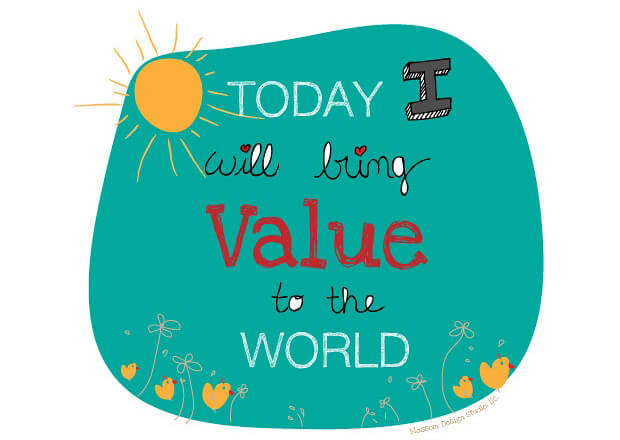6 Tips on Creating Compelling Newsletter Titles
As with anything you write, the headline or title is the most important part. If it doesn’t do its job of convincing people to keep reading, what’s the point?
A powerful headline – whether an ad headline or newsletter title – successfully does a lot of things at once:
- creates interest
- promises a benefit
- boosts readership
- increases click-through rate
If the title of your business newsletter isn’t doing those things, it’s time to breathe new life into a tired name and reap the benefits of a stronger, more compelling title. Or if you’re learning how to write a newsletter, a powerful newsletter name can determine its success.
Either way, use these tips to discover more compelling newsletter titles your audience will love.
Focus on Your Industry, not Your Company Name
Honestly, your customers and target audience don’t really care about your business name, so including it in the title of your newsletter is not usually very compelling.
A better option is to focus on your niche or industry. Doing so tells subscribers exactly what kind of content they can expect from you and establishes a common connection between you, making them more likely to subscribe in the first place and read your emails.
Consider these examples:
“Smith & Smith Monthly Newsletter” vs. “Small Business Legal Insider”
“NewAge Marketing Agency Newsletter” vs. “Digital Marketing Guide”
See how the original newsletter titles are uninspiring, while the second title options are more interesting and compelling?
Consider Benefits for Your Subscribers
Readers want to know what they get for the “price” of their email addresses. So one winning strategy for naming your newsletter is to incorporate the benefits your subscribers get by reading your emails. Show the value you bring them.

Part of doing this is defining your purpose, as this article from AppSumo Blog discusses. It’s not enough to say you’re going to keep your audience abreast of industry news.
What’s the benefit of news besides more email in your subscribers’ inboxes?
Go one step further (at least) and define the specific purposes of your newsletter. Will you give customers a competitive advantage in the industry? Do you help them do their jobs faster and more efficiently?
The other part of this is knowing what your audience wants in the first place. How will
your newsletter fulfill that need?
How is it different from your competitors’ newsletters?
Consider these examples of benefit-driven newsletter titles:
“Bob’s Daily Productivity Newsletter” vs. “Get More Done Today”
“CityMaids Cleaning Guide” vs. “Pristine Home Weekly”
See how the benefits in the second examples – a gorgeously clean house and a smaller to-do list, and the pride and accomplishment of both – make the newsletter sound like something you might actually want to read?
Remember Your Target Audience
If your newsletter title names the people who will most benefit from it, they are far more likely to subscribe because they know you’re writing especially for them. Such a title indicates you know who they are, what they need, the problems they struggle with, and more importantly, the answers and solutions they seek.
Consider these examples:
“Commission Nation Newsletter” vs. “Affiliate Marketers Guide to Wealth”
“Donna’s Baby Supplies Newsletter” vs. “Stay-at-Home Mom’s Product Review”
Notice how the second examples are more interesting and applicable by addressing a specific group of people?
Incorporate Action into Your Title
A headline without verbs is boring, stale, and motionless. You can encourage sign-ups and readership just by adding action to your newsletter title.
There are two ways to add action to your title. One option is to actually use a verb, usually at the beginning of the newsletter name. The other way is to pinpoint the verb that best describes your company’s main activity or purpose, and add “-ing” to it.
Take a look at these examples:
“Wealthy Entrepreneur Today” vs. “Triple Your Profits Report”
“The Mountain Bicycle Enthusiast” vs. “Mountain Biking Guide”
See how the second examples have action in them and feel more exciting?
Brainstorm Content
Before you settle on a newsletter title, try brainstorming the content you will publish for the first several newsletters. Don’t create a full-fledged editorial calendar yet. Just generate ideas, plan articles in advance, and survey your customers about your newsletter content ideas. Doing this can help you:
- beat writer’s block by staying ahead of schedule
- discover what the benefits of your content really would be
- determine the main action you could use in the title
- find out if your customers would be interested in your content
Don’t Call it a Newsletter
How many newsletters do you subscribe to that have the word “newsletter” in the name?
Calling your newsletter a newsletter is boring and redundant, and many would-be subscribers hesitate to sign up because they don’t know if that word indicates news, unending promotions, occasional spam, or quality content.
Calm their fears and make your newsletter title more compelling by using a word that indicates the kind of value you offer, such as:
- News
- Trends
- Report
- Guide
- Letter
- Review
- Insider
Words that indicate timeliness, like “today” or “weekly,” can also be good substitutes for “newsletter.” This article from Content at Scale lists several more value words and great ideas for picking a newsletter name.
What’s your favorite newsletter title that you subscribe to? What naming tips and tricks can you share? Please tell us in the comments.

Comments (0)